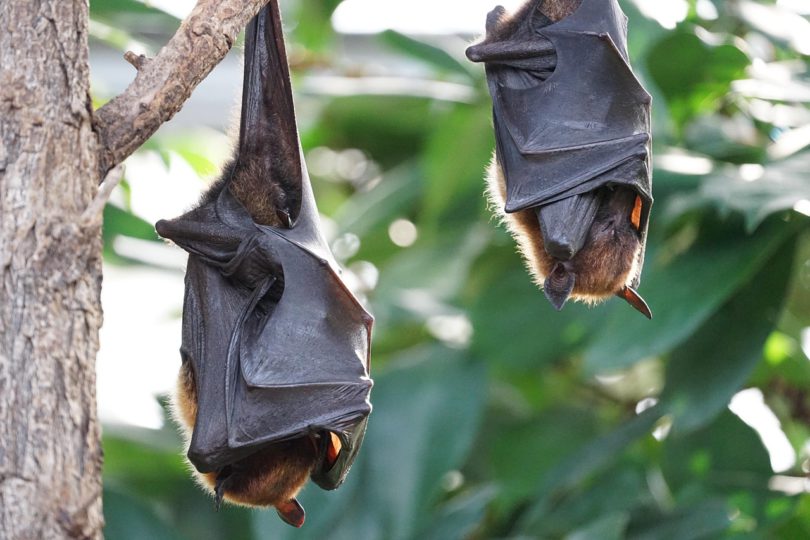Bats are among the most fascinating creatures of the night. For centuries, people have been intrigued by their nocturnal habits, mysterious flight patterns, and role in ecosystems. One of the most remarkable abilities bats possess is echolocation—a biological sonar system that allows them to “see” in total darkness. Understanding this incredible adaptation reveals just how specialized and efficient these animals are, and why they are such essential players in nature.
What Is Echolocation?
Echolocation is the process of emitting sound waves and interpreting the echoes that bounce back from surrounding objects. Essentially, bats send out high-pitched calls—often too high for humans to hear—and listen carefully to the returning echoes. These echoes provide detailed information about the environment, including the size, distance, shape, and even texture of objects.
Through echolocation, bats can navigate complex environments, avoid obstacles, and locate prey with astonishing precision—even in complete darkness. Some species can detect insects as small as mosquitoes, demonstrating the extraordinary sensitivity of their auditory systems.
How Bats Produce Sound
Most echolocating bats produce calls through their larynx, directing the sound either through the mouth or nostrils. The calls are extremely high frequency, typically ranging from 20 kHz to over 100 kHz—far above the upper limit of human hearing, which is about 20 kHz. Some bats also adjust the intensity and frequency of their calls depending on their surroundings.
For instance, a bat flying in open space might use lower-frequency calls that travel farther, while a bat maneuvering through dense foliage will use higher-frequency calls to detect fine details of nearby obstacles. This flexibility allows bats to thrive in a variety of habitats, from caves and forests to urban areas.
Interpreting Echoes
The bat’s brain is specially adapted to process echolocation data at incredible speeds. By analyzing the time delay between the emitted call and the returning echo, bats can estimate how far away an object is. Differences in echo intensity and frequency changes help determine the size and texture of the object. Some bats can even detect tiny movements, such as the fluttering of insect wings.
This precise sensory input enables bats to capture prey mid-flight with incredible accuracy. In fact, certain species can catch hundreds of insects in a single night, making them highly effective natural pest controllers.
Variations Among Species
Not all bats echolocate in the same way. While most insect-eating bats rely heavily on echolocation, fruit bats (flying foxes) primarily use their keen eyesight and sense of smell, although some species do produce simple echolocation calls. Additionally, different species employ various call patterns, including constant frequency calls, frequency-modulated calls, or a combination of both.
Constant frequency calls are useful for detecting moving prey, as they allow bats to notice tiny changes in echo frequency caused by motion. Frequency-modulated calls, which sweep across a range of frequencies, provide more detailed information about an object’s shape and distance. By combining these methods, bats maximize their ability to navigate and hunt in diverse environments.
Echolocation in Daily Life
Echolocation isn’t just for hunting. Bats use it to avoid obstacles, find roosting spots, and even communicate with other bats. In large colonies, bats rely on echolocation to avoid mid-air collisions and locate specific individuals among hundreds of flying companions. This adaptability highlights the importance of echolocation not only as a feeding strategy but also as a key survival mechanism.
Why Echolocation Matters
Bats’ echolocation abilities have inspired human technologies such as sonar, ultrasound imaging, and robotics navigation systems. Scientists continue to study how bats process sound and interpret echoes, hoping to replicate their efficiency in engineering applications.
Beyond human fascination, echolocation also underscores the ecological importance of bats. By enabling precise hunting at night, bats control insect populations, pollinate plants, and disperse seeds—services that are vital to many ecosystems. Protecting bats and their habitats ensures that these nocturnal navigators continue to thrive, maintaining the balance of nature.
Observing Bats Safely
For wildlife enthusiasts, observing bats can be an exciting experience. Bat houses, local caves, and evening walks in areas known for bat activity provide opportunities to watch these nocturnal creatures. Using bat detectors, devices that convert ultrasonic calls into audible sounds, allows people to “hear” echolocation in action. Remember to observe from a safe distance, as bats are sensitive to disturbance and play a crucial role in their environments.
Conclusion
Echolocation is a stunning example of evolutionary ingenuity. Through sound, bats navigate the darkness with precision, locate elusive prey, and interact with their environment in ways humans can only imagine. By learning about echolocation, we gain a deeper appreciation for these remarkable animals and the critical roles they play in ecosystems around the world. Watching or listening to bats in action provides a glimpse into a hidden world—one where sound, not sight, rules the night.

